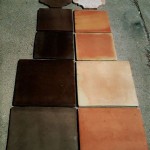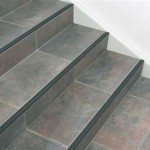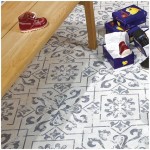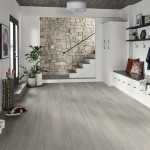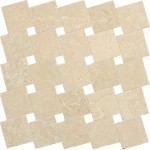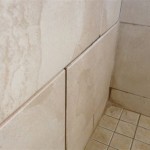Making The Right Choice: Hardwood or Tiles
Selecting the appropriate flooring material is a fundamental aspect of interior design and home improvement, influencing not only the aesthetic appeal but also the functionality, durability, and overall value of a space. Two of the most popular and enduring flooring options are hardwood and tiles. Both offer a wide range of benefits, but they also present distinct drawbacks that must be carefully considered to make an informed decision. This article provides a detailed comparison of hardwood and tile flooring, examining their key characteristics, advantages, disadvantages, and suitability for different applications.
Aesthetic Appeal and Design Versatility
The visual impact of flooring significantly contributes to the overall ambience of a room. Hardwood flooring is renowned for its natural warmth, richness, and timeless elegance. The unique grain patterns, color variations, and textures of different wood species create a sense of character and sophistication. Hardwood can be stained and finished in a variety of ways to complement any décor style, from traditional to contemporary. The natural beauty of wood brings an organic element into the space, enhancing its perceived value and creating a comfortable and inviting atmosphere.
Tile flooring, on the other hand, offers a broader spectrum of design possibilities. Available in countless colors, shapes, sizes, patterns, and textures, tiles can mimic the appearance of natural stone, wood, concrete, and even fabric. This versatility allows for the creation of unique and personalized designs that are not achievable with hardwood. Ceramic and porcelain tiles are particularly adept at replicating the look of other materials, providing cost-effective alternatives to more expensive options. The geometric precision of tile installations can create a sense of order and sophistication, while patterned tiles can add a touch of personality and visual interest.
Ultimately, the choice between hardwood and tile hinges on the desired aesthetic. Hardwood offers a classic and natural look, while tile provides greater design flexibility and the ability to emulate a wider range of materials.
Durability and Maintenance Requirements
The durability of flooring is a critical factor, particularly in high-traffic areas. Hardwood flooring, while aesthetically pleasing, is susceptible to scratches, dents, and water damage. The lifespan of hardwood depends on the species, the quality of the finish, and the level of maintenance. Softer wood species, such as pine, are more prone to damage than harder species, such as oak or maple. Regular cleaning, refinishing, and the use of protective mats and rugs are necessary to maintain the appearance and longevity of hardwood flooring. Exposure to excessive moisture can cause warping, cupping, and discoloration, making hardwood unsuitable for bathrooms and laundry rooms.
Tile flooring is generally more durable and resistant to wear and tear than hardwood. Ceramic and porcelain tiles are incredibly hard and impervious to water, stains, and scratches. They can withstand heavy foot traffic and are ideal for high-traffic areas, bathrooms, kitchens, and entryways. Tile is also resistant to fading and discoloration, making it suitable for areas with prolonged exposure to sunlight. The maintenance requirements for tile flooring are relatively simple, typically involving regular sweeping, mopping, and occasional grout cleaning. While tile is durable, it is also brittle and can crack or chip if subjected to heavy impact.
The inherent durability of tile makes it a more practical choice for areas prone to moisture or heavy use, while hardwood requires more careful maintenance and is better suited for drier, lower-traffic areas.
Cost Considerations: Installation and Long-Term Expenses
The initial cost of flooring installation can vary significantly depending on the material, the complexity of the installation, and the labor costs in a particular region. Hardwood flooring typically has a higher initial cost than tile flooring, primarily due to the material costs and the specialized installation techniques required. The cost can range from relatively inexpensive engineered hardwood to premium solid hardwood options. Subfloor preparation is often necessary to ensure a level and stable surface for hardwood installation, adding to the overall expense. Professional installation is highly recommended to achieve optimal results and prevent future problems.
Tile flooring generally has a lower material cost than hardwood, but the installation can be labor-intensive and require specialized skills. The cost of tile varies depending on the material, size, and design complexity. Installation involves precise cutting, setting, and grouting, which can be time-consuming and challenging. The cost of grout and sealant must also be factored into the overall expense. While DIY tile installation is possible, professional installation is recommended to ensure a watertight and aesthetically pleasing result.
Beyond the initial installation costs, long-term expenses must also be considered. Hardwood flooring may require periodic refinishing to restore its appearance and protect it from damage. This can be a significant expense, particularly for large areas. Tile flooring, on the other hand, requires minimal maintenance and is less prone to damage, resulting in lower long-term costs. However, cracked or chipped tiles may need to be replaced, and grout lines may require occasional cleaning and sealing to prevent staining and mildew growth.
While hardwood typically has a higher initial cost, the long-term expenses can vary depending on the maintenance requirements and the likelihood of damage. Tile flooring generally offers a more cost-effective solution over the long term, particularly in high-traffic and moisture-prone areas.
Comfort and Acoustics
The comfort and acoustic properties of flooring can significantly impact the overall living experience. Hardwood flooring provides a warmer and more comfortable surface underfoot than tile. Wood has natural insulating properties that help to retain heat and reduce drafts. The slightly resilient nature of hardwood also provides a more forgiving surface for walking and standing, reducing fatigue. Hardwood flooring also absorbs sound, reducing echoes and creating a quieter and more peaceful environment. Area rugs and carpets can further enhance the comfort and acoustic properties of hardwood floors.
Tile flooring, on the other hand, can feel cold and hard underfoot, particularly during colder months. Tile does not provide the same level of insulation as hardwood and can contribute to heat loss. The hard surface of tile can also be less comfortable for walking and standing for extended periods. Tile flooring is also highly reflective of sound, which can amplify echoes and create a noisier environment. Area rugs and carpets can help to mitigate the coldness and noise associated with tile flooring.
The comfort and acoustic properties of hardwood make it a more desirable choice for living rooms, bedrooms, and other areas where comfort is a priority. Tile flooring is better suited for areas where durability and water resistance are more important than comfort.
Environmental Considerations and Sustainability
The environmental impact of flooring materials is an increasingly important consideration for many homeowners. Hardwood flooring can be a sustainable choice if the wood is sourced from responsibly managed forests. Look for certifications such as the Forest Stewardship Council (FSC) to ensure that the wood is harvested in a sustainable manner. Reclaimed hardwood flooring is another environmentally friendly option that reduces the demand for new wood. The manufacturing process for hardwood flooring typically has a lower environmental impact than the production of tile.
Tile flooring can also be a sustainable choice if it is made from recycled materials or if the manufacturing process uses sustainable practices. Some tile manufacturers use recycled glass, porcelain, or other materials in their products. The durability and longevity of tile flooring also contribute to its sustainability, as it requires less frequent replacement than other flooring options. However, the manufacturing process for tile can be energy-intensive and can generate significant amounts of waste. The transportation of tile can also contribute to its environmental impact.
Both hardwood and tile flooring can be sustainable choices depending on the sourcing of materials and the manufacturing processes involved. Choosing products from reputable manufacturers with sustainable practices is essential for minimizing the environmental impact.
Suitability for Different Rooms and Applications
The suitability of hardwood and tile flooring varies depending on the specific requirements of each room and application. Hardwood flooring is an excellent choice for living rooms, dining rooms, bedrooms, and hallways. Its warmth, beauty, and comfort make it ideal for creating inviting and comfortable living spaces. However, hardwood is not well-suited for bathrooms, laundry rooms, or kitchens, where moisture levels are high. Engineered hardwood can be a better option for these areas, as it is more resistant to moisture than solid hardwood.
Tile flooring is an ideal choice for bathrooms, kitchens, laundry rooms, entryways, and other areas where durability, water resistance, and ease of cleaning are essential. Tile is also a good option for high-traffic areas, such as hallways and entryways, where it can withstand heavy foot traffic without showing wear and tear. Tile is not as comfortable as hardwood for living rooms and bedrooms, but it can be used effectively in these areas with the addition of area rugs and carpets.
Careful consideration of the specific requirements of each room is crucial in determining the most appropriate flooring material. Hardwood excels in living spaces where comfort and aesthetics are paramount, while tile is the preferred choice for areas where durability and water resistance are essential.

Hardwood Vs Tile Kitchen Flooring A Comprehensive Comparison Ranney Blair Weidmann

Ask Maria Can I Combine Faux Hardwood Tile With My Oak Floors Advice For Homeowners

Hardwood Floors Vs Tile Making The Right Flooring Choice For Your Home Dusek Powell Custom Builders

Tile Vs Solid Wood Flooring Which Is Better

Tile Vs Wood Flooring Best Decision For Your Home

Natural Wood Floors Vs Look Tile Flooring Which Is Best For Your House Designed

Tile Vs Hardwood Floors Making The Right Choice For Your Home Grand More

Best Flooring Choices To Make Your Room Look Bigger And Brighter

Hardwood Vs Tile Kitchen Flooring A Comprehensive Comparison Ranney Blair Weidmann

Ceramic Tile Vs Hardwood Flooring Which Is Better For Your Home
Related Posts

